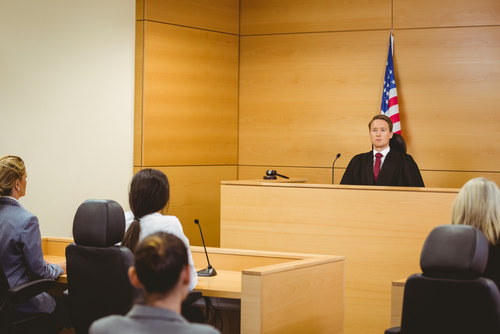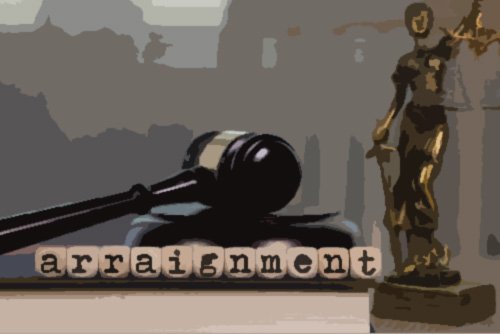In California, a Penal Code 911 motion is made by a defendant who is in custody at the time of a misdemeanor arraignment. The defense asks the judge to find that there is insufficient probable cause to support the charge. If the motion is granted, the charge is dismissed and the defendant is released from custody.
If the motion is denied, the case proceeds as it normally would.
The motion is often called a “motion to dismiss a misdemeanor” in California.
Penal Code 991 motions serve to filter out weak misdemeanor cases at an early stage. They also prevent defendants from being held in jail for an extended period without probable cause. The function is similar to that of a preliminary hearing in a felony case.

991 motions can help defendants get out of jail quickly when the case against them is weak.
1. What is a 991 motion and how does it work?
A Penal Code 991 motion is a defense motion asking the judge to decide whether there is probable cause to believe that the crime was committed. The judge has to rule on the motion. It forces the judge to review the evidence early in the case and decide whether it is worth continuing.
Because the case has just begun, that evidence is usually in a very preliminary state. It often only includes:
- the police reports,
- the arrest warrant,
- any search warrants that had been issued,
- affidavits made in support of the warrants, and
- the sworn complaint and any documents it includes.1
The judge has to make a probable cause determination immediately. The only exception is if the court grants a continuance. Under Penal Code 1050 PC, a continuance has to be for good cause. The continuance cannot delay the probable cause determination by more than 3 court days.
If the judge finds that there is probable cause, he or she will deny the motion. Once denied, the case will continue to pretrial or other proceedings.
Example: Police have extensive evidence that Paul committed credit card fraud. Paul files a 991 motion but the judge denies it. The arraignment continues like normal, with the judge moving on to the issue of bail.
Effect of the Court’s Ruling
If the judge decides that there is no probable cause to believe that the defendant committed the crime, he or she will grant the motion. Once granted, the charges will be dismissed by the court.
The prosecutor can refile the charges within 15 days.2 The new charges can include new evidence to support the issue of probable cause.
The defense can bring another 991 motion as to the refiled charges. If the motion is granted a second time, it bars the prosecutor from refiling the charges any further.3
Example: Mary is charged with shoplifting. She brings a 911 motion. The judge grants the motion and dismisses the case. A week later the D.A. refiles the same charges. Mary brings another 911 motion. It too is granted and the charges again dismissed. Now the D.A. is permanently barred form refiling the same charge.
2. Who can bring a motion to dismiss a misdemeanor?
Criminal defendants or their defense lawyers can bring a Penal Code 991 motion. To be eligible, all of the following must be true:
- The defendant is being charged with a misdemeanor crime,
- The defendant has been held in custody up until the arraignment, and
- The defendant has pleaded not guilty.
991 motions are not available for felony offenses.

A 991 motion can only be brought during the misdemeanor arraignment hearing.
3. When can the motion be brought?
A 991 motion can only be brought during the arraignment hearing.
The arraignment hearing is the first court appearance for the defendant after their arrest. In California, the arraignment has to happen within 48 hours of an arrest for a misdemeanor offense.
The arraignment is where defendants are told what crime they are being accused of committing. It is also where they enter their initial plea.
Once the defendant has pleaded not guilty to the charges, he or she can bring the motion.
4. What is probable cause?
Probable cause is a standard of the likelihood that a particular suspect committed a particular crime. Probable cause exists when it is more likely than not that the suspect committed the offense.
In theory, police need to have probable cause before arresting someone. However, this is not always the case. Police frequently make arrests before they have gathered enough evidence to establish probable cause.
Example: Lacey is leading a protest against police brutality. Local cops do not like her message. They arrest her, claiming that she has committed disorderly conduct.
5. Why is it worth it to file a 991 motion?
When the accused qualifies to bring a 911 motion, it can be a useful defense tactic.
- If the motion is denied, nothing is lost.
- If it is granted, the court dismisses the charges early in the criminal justice process.4
Defendants enjoy several benefits from a successful motion:
- They get out of jail,
- They do not have to continue to defend against the charges,
- The costs of their legal defense are lower, and
- The time, energy, and stress of defending against a criminal charge are over after only a couple of days.

Contact us for help with your case.
Legal References:
- California Penal Code 991(c); see also Barajas v. Appellate Division of Superior Court, 253 Cal. Rptr. 3d 641, 40 Cal. App. 5th 944 (2019).
- California Penal Code 991(e).
- California Penal Code 991(e).
- See, e.g., People v. McGowan, 242 Cal. App. 4th 377, 195 Cal. Rptr. 3d 312 (2015).
